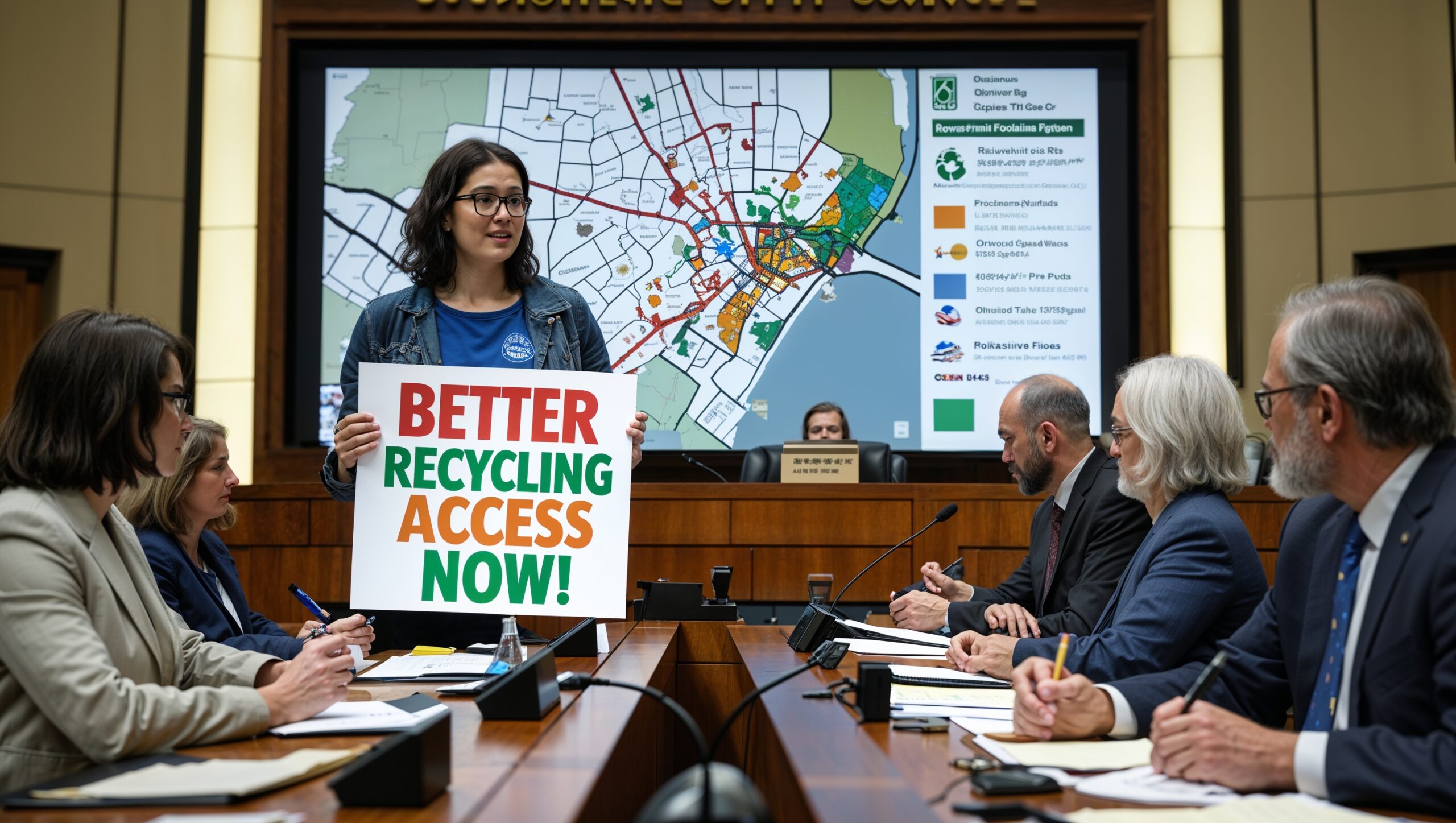You might sort your waste, rinse every container, and use the right bin — but your individual effort is only part of the picture. Behind the scenes, local policies and infrastructure play a major role in determining whether your recyclables are actually recycled.
In this article, we’ll explore how local regulations, investments, and political decisions shape recycling systems — and how you can influence change in your community.
Why Recycling Varies So Much by Location
Ever visited a friend in another city and noticed different recycling rules?
That’s because in most countries — including the U.S., Canada, and Brazil — waste management is handled at the local or municipal level. This means each city or region:
- Sets its own recycling guidelines
- Chooses which materials to collect
- Decides how items are sorted and processed
- Contracts with private or public waste haulers
So what’s recyclable in one city might be trash in another.
1. The Role of Local Governments
Local policies influence:
✅ Collection Systems
- Single-stream: All recyclables in one bin
- Dual-stream: Separated by material type
- Drop-off programs: You bring materials to designated sites
Each method affects contamination rates, costs, and overall success.
✅ Material Acceptance
Some programs accept:
- Plastics #1–7
- Cartons
- Glass
- Electronics
- Organics for composting
Others accept only basic materials, like paper and aluminum — limiting how much can be recycled.
✅ Education and Outreach
Municipalities decide whether and how to educate the public on:
- Sorting rules
- Bin labeling
- Contamination prevention
- Recycling updates
A well-informed community = a more effective recycling program.
2. The Impact of Funding and Infrastructure
Without proper investment, even the best recycling intentions fall flat.
🔧 Key factors:
- Access to modern sorting facilities (MRFs)
- Trucks and staff to handle separate collections
- Partnerships with regional or international buyers
- Grants for public education and innovation
Cities with limited funding often struggle to keep programs running — especially when market prices for recyclables drop.
3. How Policy Shapes Success (or Failure)
Strong local policies can dramatically boost recycling rates.
📈 Successful cities often:
- Set clear diversion targets (e.g., “Zero Waste by 2030”)
- Ban certain materials from landfills (like organics or e-waste)
- Offer financial incentives for recycling
- Require businesses and apartments to participate
On the flip side, vague or outdated policies can lead to low participation, contamination, and wasted effort.
4. What You Can Do as a Citizen
You have more power than you think to push for better recycling in your community.
🗳️ Get Informed:
- Read your city’s waste management plan
- Learn what materials are accepted and why
- Ask questions at local council meetings or open forums
📣 Advocate:
- Contact your local representatives
- Start a petition or community recycling campaign
- Ask for better signage, bin access, or education efforts
🧠 Educate:
- Share reliable information with neighbors and friends
- Post clear guides in your building or office
- Host a recycling awareness event or cleanup
Local change starts with informed, vocal residents.
5. Push for Long-Term Solutions
Think beyond curbside bins. Encourage your city to invest in:
- Composting programs for food and yard waste
- Textile recycling or repair initiatives
- E-waste and hazardous material drop-offs
- Recycling markets that support local jobs
- Extended Producer Responsibility (EPR) laws that hold companies accountable
These system-wide shifts make a bigger and lasting difference.
Policy Shapes Progress — But People Power It
Recycling isn’t just a personal habit — it’s a public system. And that system is only as strong as the policies behind it.
By understanding how local decisions affect waste management — and taking action — you become more than just a recycler.
You become a community change-maker.
